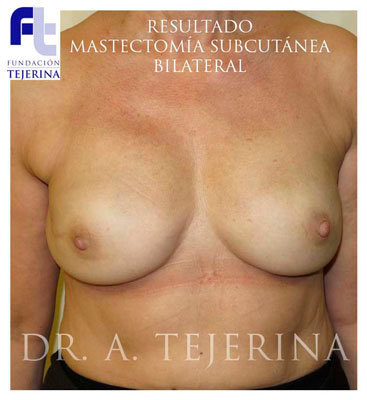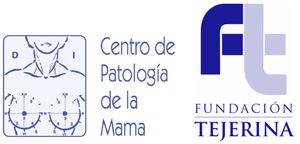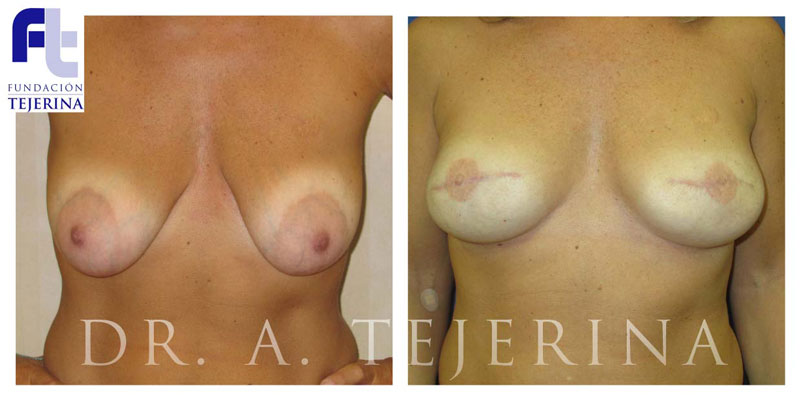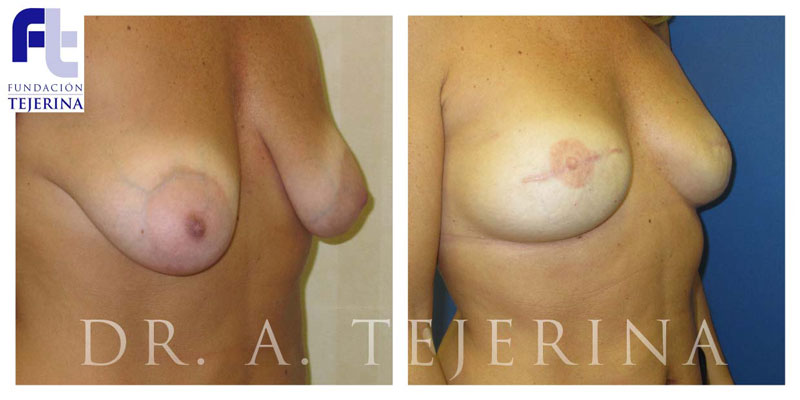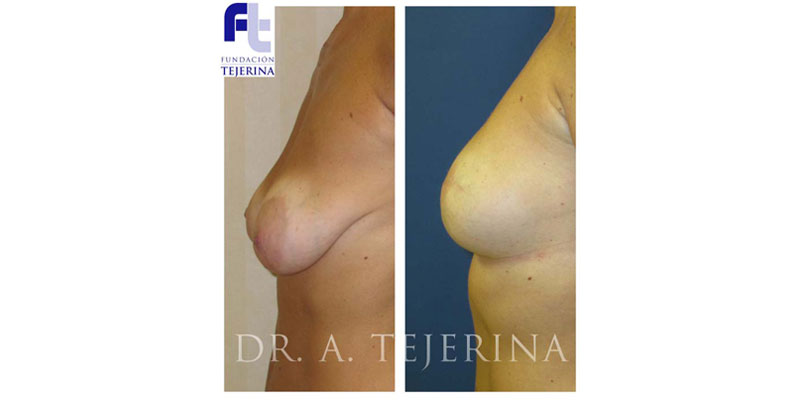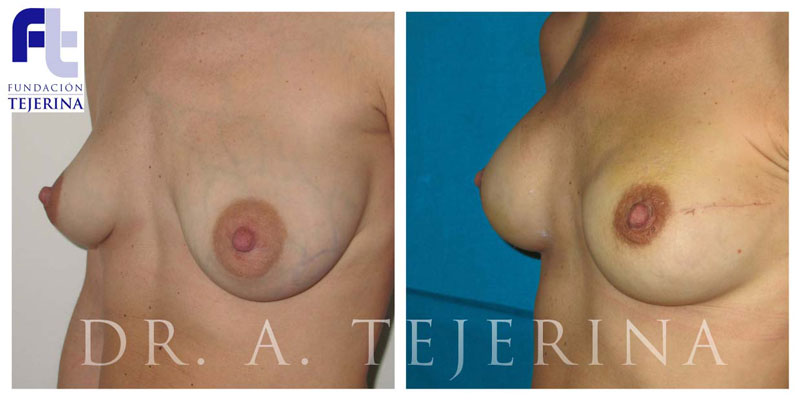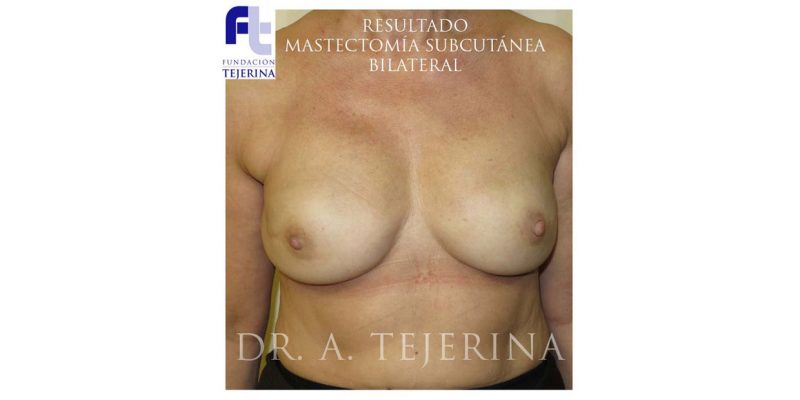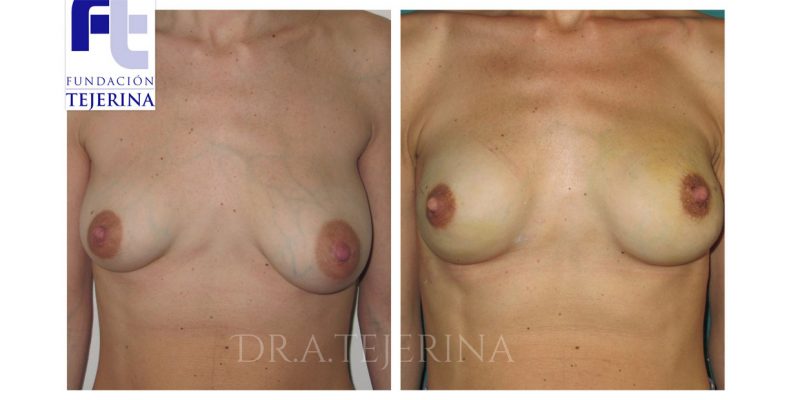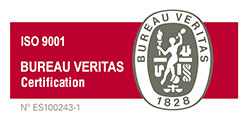Only between 5 and 10 percent of all breast cancers are hereditary. The presence of a genetic mutation in one of the genes currently known to be related to breast cancer poses a high risk of developing the disease throughout life.
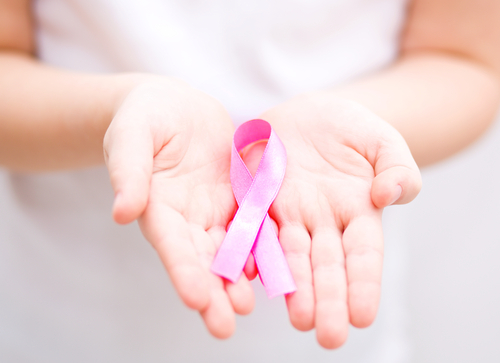
There are surgical procedures that lower the chances of developing cancer by more than 90 percent.
The purpose of surgery is not only to reduce the risk of cancer, but also to eliminate the worry and anxiety that is generated in these women knowing that they are more likely than other women to suffer from cancer throughout their lives.
Our Genetic Counseling Unit is made up of a multidisciplinary team of professionals (oncologists, oncological surgeons, plastic surgeons, and psychologists) who will inform you and help to address all your concerns.
Frequently Asked Questions about Risk Reduction Surgery
What is a risk reduction mastectomy?
Risk reduction mastectomy is a surgical procedure that removes all or almost all the mammary gland tissue (subcutaneous mastectomy). This procedure reduces the chances of cancer developing in the future by more than 90%. Women who have received correct advice and who are well informed will be prepared to decide whether to have the surgery.
How can I decrease the risk of developing ovarian cancer?
Regarding the risk of developing ovarian cancer, it is recommended that all women over the age of 35 carrying the mutation should have a bilateral salpingo-oophorectomy when they have decided not to have any more children. This procedure reduces the risk of ovarian cancer by more than 90 percent and the risk of breast cancer by 50 to 68 percent.It also decreases overall cancer mortality.
What women should have a risk reduction mastectomy?
– Healthy patients with a mutation in the BRCA gene or in other genes that increase the risk of breast cancer.
– Healthy patients without any known mutation and with a strong family history of breast cancer.
– Healthy patients without any known mutation and with a personal history of premalignant lesion or risk of developing cancer.
– Patients undergoing thoracic irradiation before 30 years of age.
– Patients who have had breast cancer and want to reduce the risk in the other breast.
Can the breast be reconstructed after a risk reduction mastectomy?
Yes. In fact, we are in favor of carrying out immediate reconstruction during the same procedure. It is much better for women’s quality of life and we consider it the ideal procedure.
What should I do if I have a BRCA mutation and have been diagnosed with breast cancer?
Women carrying BRCA1/2 mutations diagnosed with breast cancer should be informed by a multidisciplinary team about their cancer prognosis, estimated hereditary risk of second tumors, treatment and risk reduction options, and sequelae, and side effects of these measures. In this way, women can make a guided decision with qualified information and thus receive personalized treatment.
What controls and follow-up must be performed after a bilateral risk reduction mastectomy?
Periodically, you will have to undergo new follow ups. It is important to remember that the risk of ovarian carcinoma may persist, so it is recommended to continue following up with your gynecologist. In patients carrying the BRCA mutation, it may be advisable to undergo the surgical removal of the tubes and ovaries before the age of 40, when theirreproductive wishes have been fulfilled.
